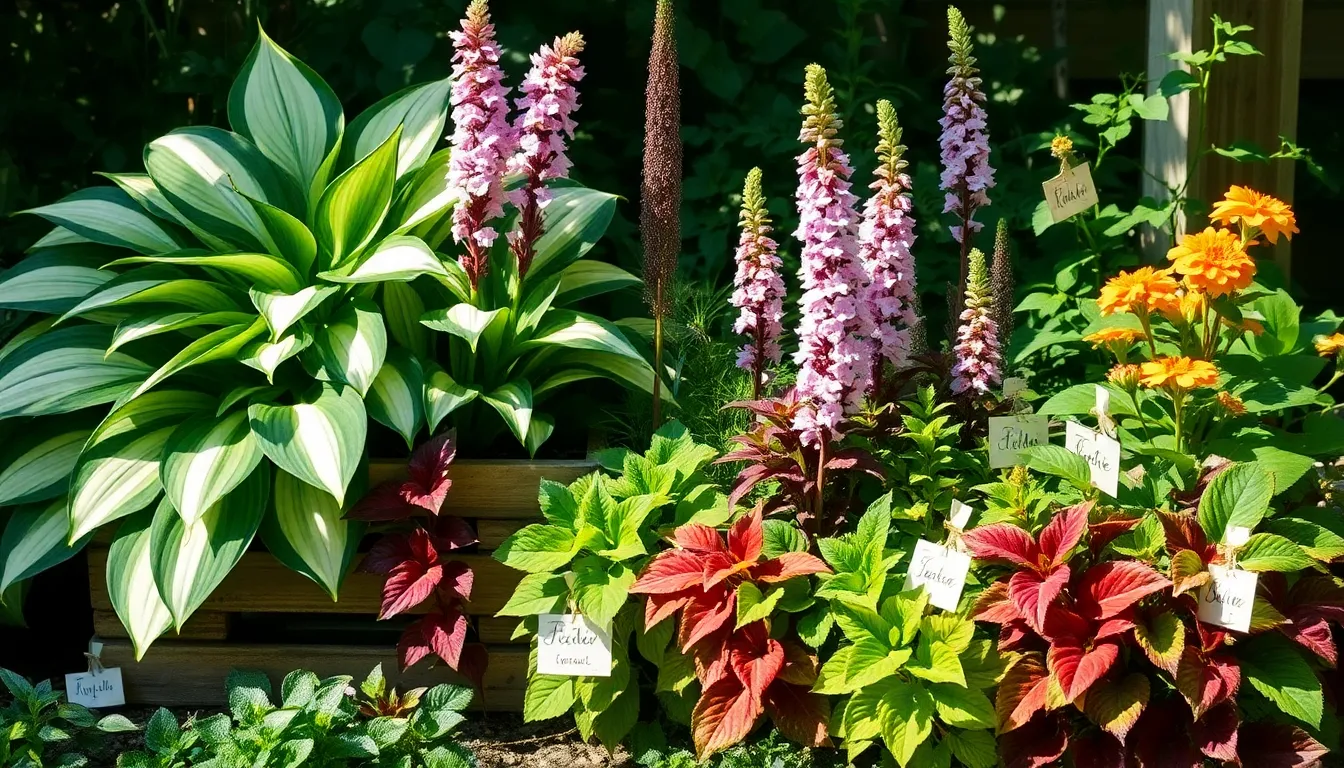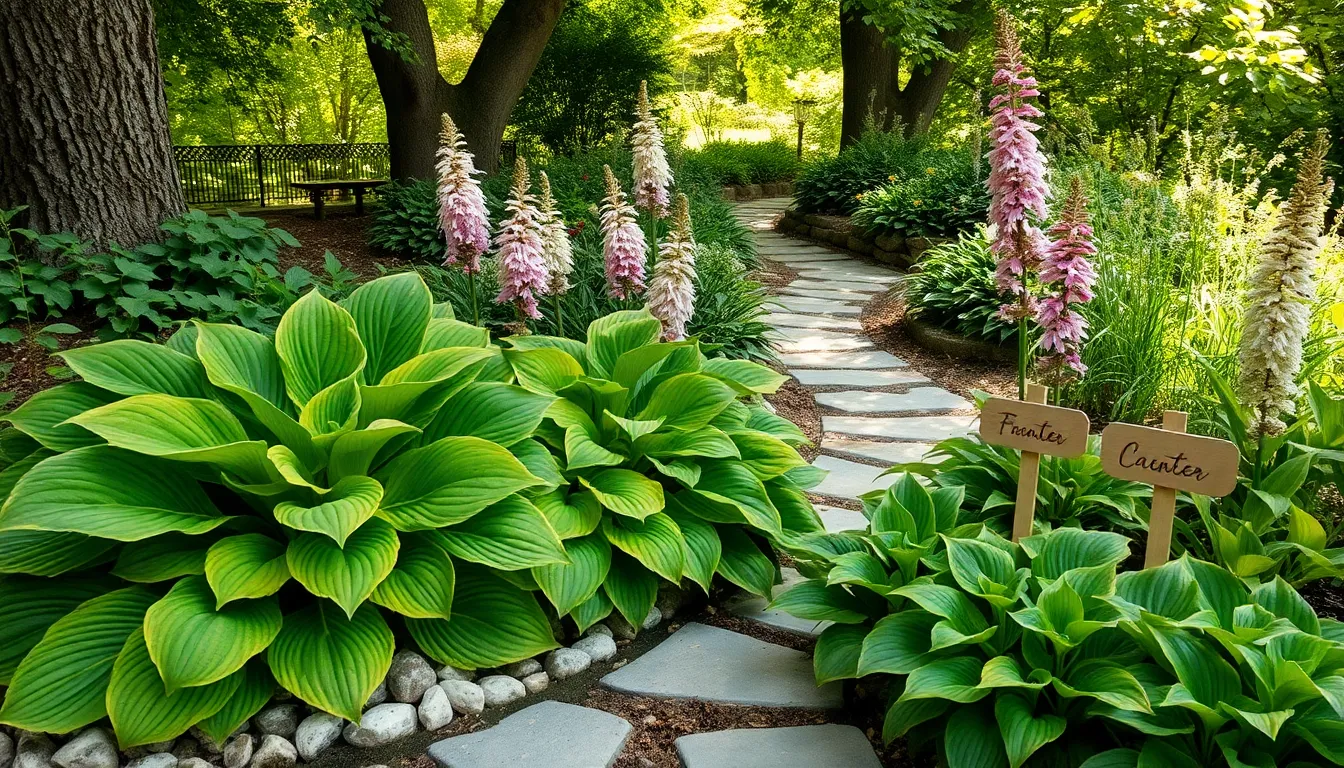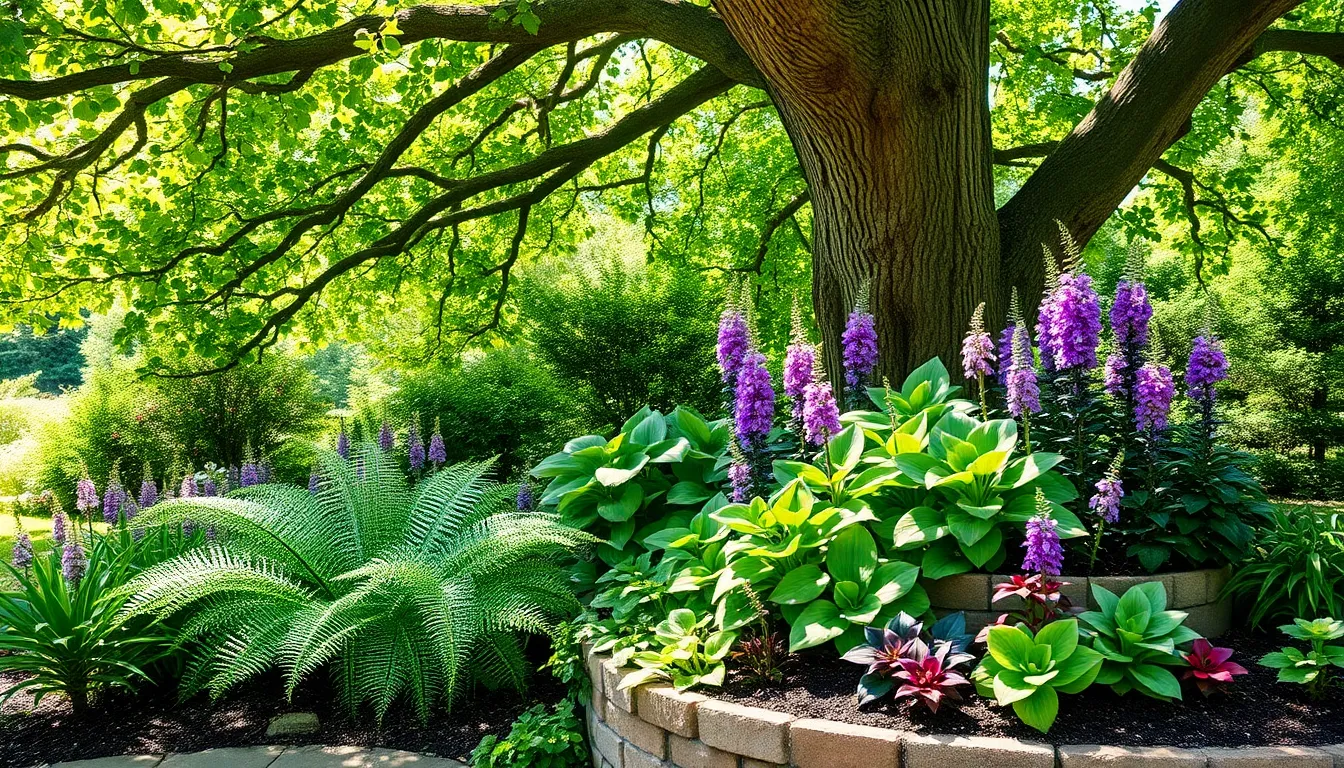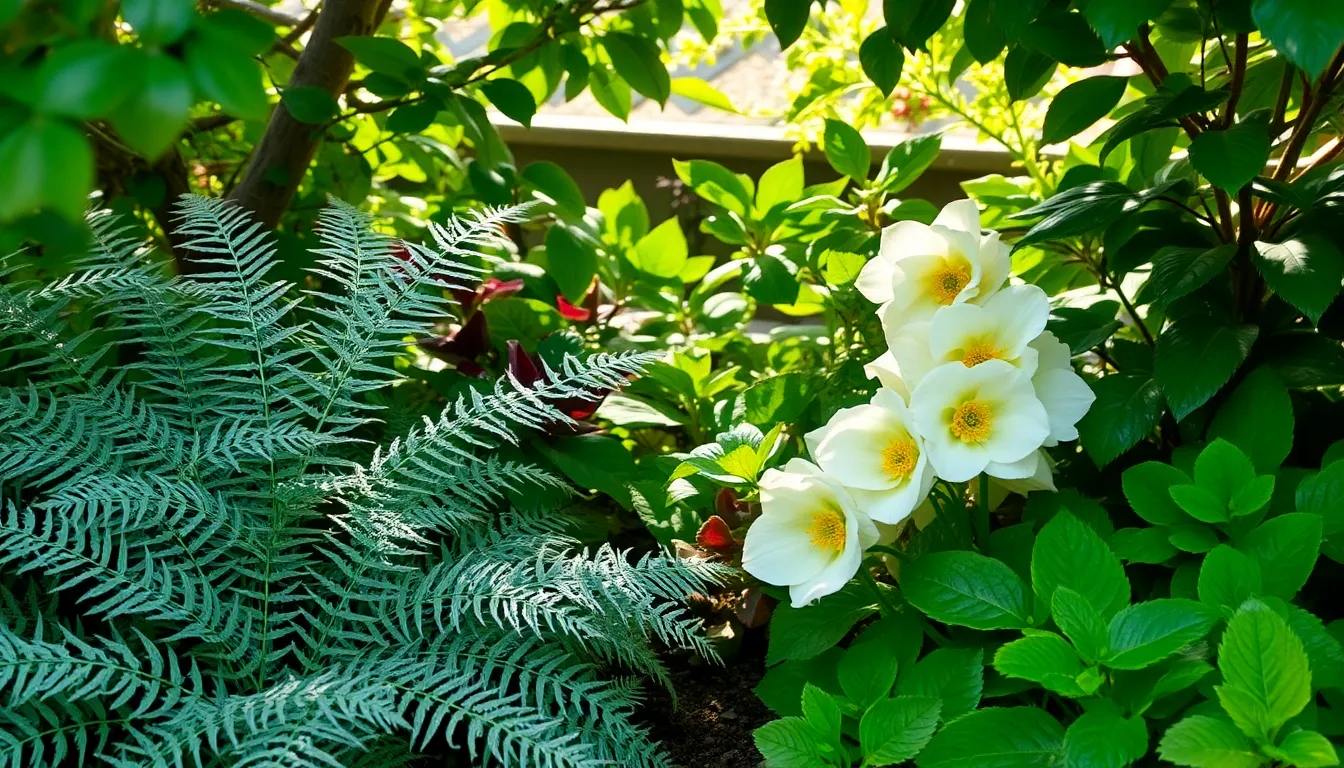Gardening enthusiasts know that cultivating a lush, thriving garden is a delightful journey, and one of the most rewarding aspects of this journey is learning to work with varying light conditions. Shade gardens, in particular, offer a unique canvas for creativity, allowing both beginners and seasoned gardeners to explore a variety of plants that thrive away from direct sunlight. Cultivating a shade garden is not just about filling in the darker corners of your yard; it’s about embracing the unique beauty and tranquility that these spaces can provide.
For those just stepping into the world of gardening, selecting plants that thrive in shade can feel daunting, but it can also be an exciting opportunity to learn and grow. This article will guide you through ten beginner-friendly plants that are perfectly suited to the gentle embrace of shade, ensuring that your garden flourishes in even the dimmest areas. These plants are selected not only for their adaptability but also for their ability to add color, texture, and interest to your garden, creating a serene oasis that beckons you to unwind and enjoy.
Experienced gardeners will find joy in revisiting familiar favorites and perhaps discovering new varieties that add depth and intrigue to their existing landscapes. Whether you’re starting fresh or enhancing an established shade garden, these plant suggestions will inspire and inform your gardening decisions. By the end of this article, you’ll be equipped with the knowledge and confidence to transform shaded areas into charming garden retreats, nurturing both plants and your passion for gardening.
Understanding Shade Garden Basics
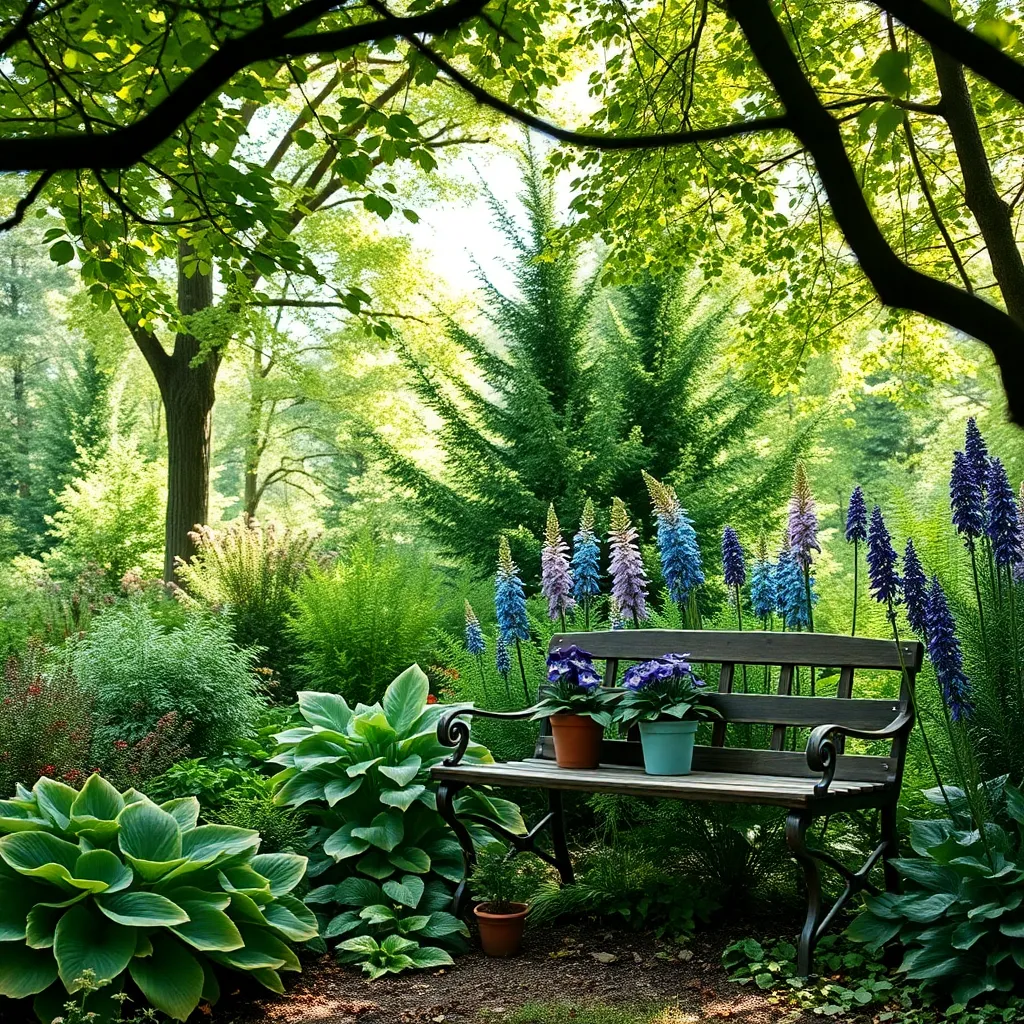
Creating a shade garden starts with understanding how much sunlight your area receives. A true shade garden typically gets less than four hours of direct sunlight per day, often with dappled light filtering through trees.
It’s important to choose plants that thrive in low-light conditions, as these will be your garden’s foundation. Ferns, hostas, and astilbes are classic choices that do well in shaded areas, offering a variety of textures and colors.
Soil quality is crucial for shade gardens since they often contend with poorer, compacted soil. Improve your garden’s soil by adding organic matter like compost or well-rotted manure to enhance drainage and provide nutrients.
Watering practices should be adjusted for shade gardens since these areas retain moisture longer. Check soil moisture regularly and water deeply but less frequently to encourage deep root growth, ensuring plants remain healthy during dry spells.
For those looking to enhance their shade garden, consider introducing layering techniques to create depth and interest. Use groundcovers like vinca or sweet woodruff beneath taller plants to add dimension and suppress weeds.
Hostas: The Shade Garden Staple
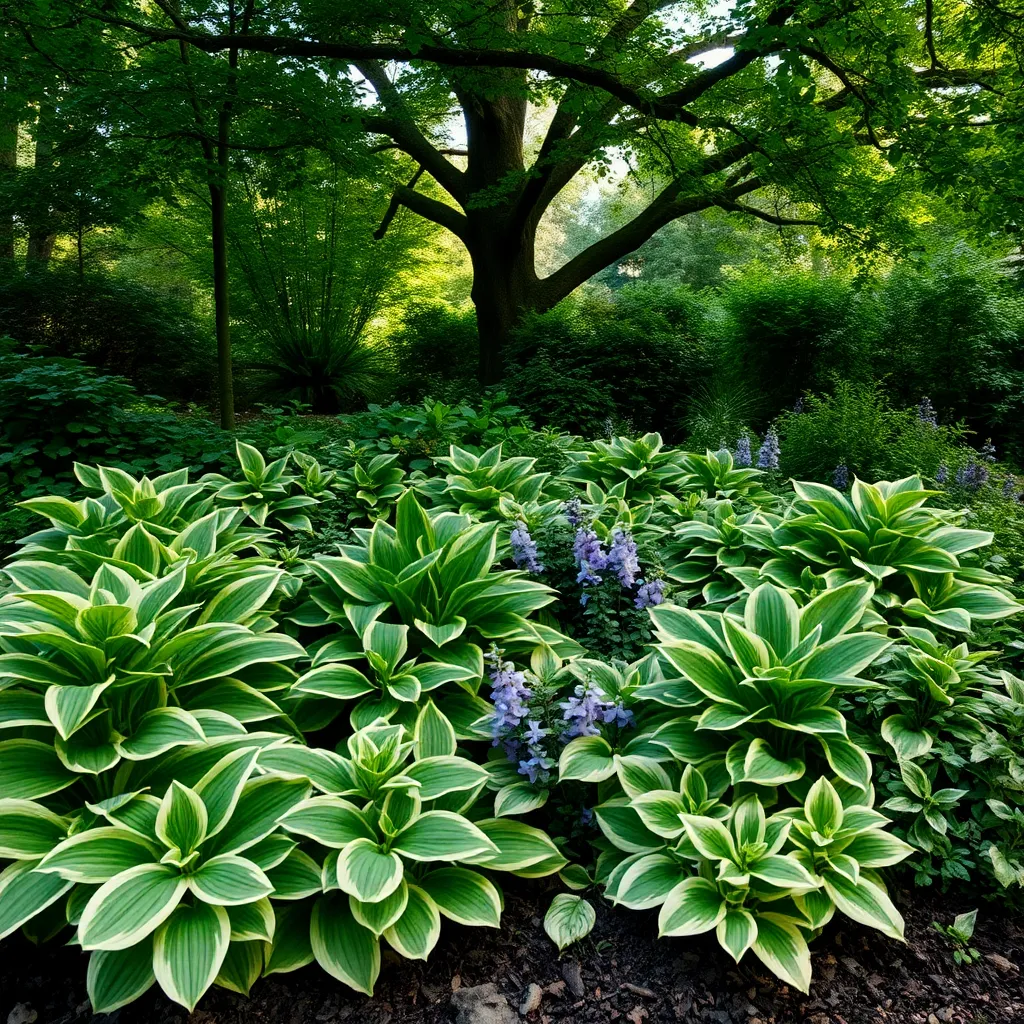
Hostas are a versatile addition to any shade garden, making them a favorite among both novice and seasoned gardeners. These perennials thrive in partial to full shade, where their lush foliage can create an eye-catching display of greens and blues.
When planting hostas, choose a location with well-draining soil that retains some moisture without becoming waterlogged. Incorporate organic matter like compost to improve soil quality and provide essential nutrients for robust growth.
Water hostas deeply once a week, ensuring the soil remains consistently moist but not soggy. Mulching around the base of the plant can help retain soil moisture and suppress weeds, offering a low-maintenance solution for busy gardeners.
For a stunning display, consider mixing different varieties of hostas, as they come in a wide range of sizes and leaf colors. Experiment with blue, gold, and variegated types to add depth and interest to your garden’s shaded areas.
Ferns: Lush Green Elegance
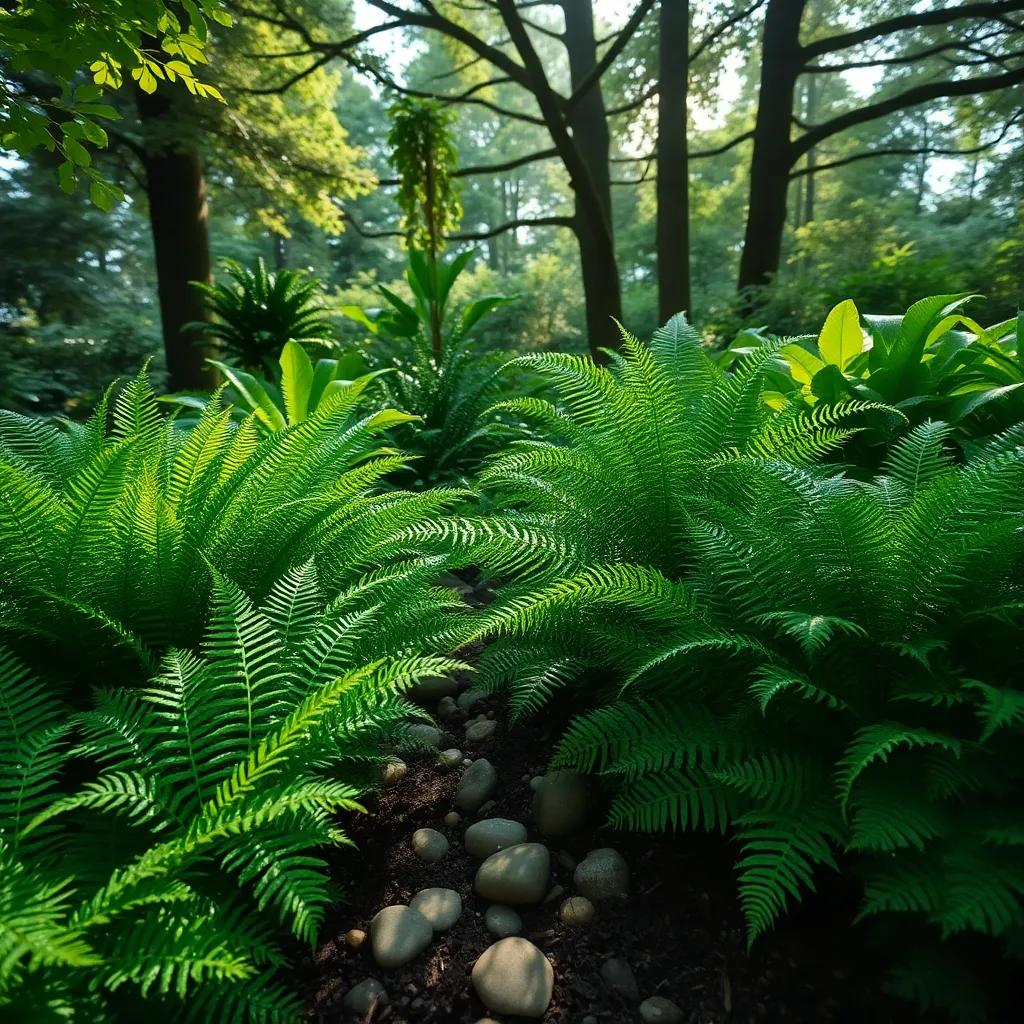
Ferns bring a touch of lush elegance to any shade garden, thriving in the dappled light beneath trees or along shaded paths. These plants are remarkably adaptable, but they prefer consistently moist, well-drained soil to keep their fronds vibrant and healthy.
For beginners, ferns like the Boston fern or the Maidenhair fern are excellent choices due to their resilience and beauty. Ensure the soil is rich in organic matter by adding compost or well-rotted leaf mulch, which helps maintain moisture and provide essential nutrients.
When planting ferns, space them about a foot apart to allow for natural growth and air circulation, which reduces the risk of fungal diseases. Regular watering is key, especially during dry spells, but avoid water-logging as it can lead to root rot.
More experienced gardeners might explore varieties such as the Japanese painted fern, which offers striking silver and burgundy hues. Remember to trim back dead or damaged fronds in early spring to encourage new growth and maintain a tidy appearance.
Astilbes: Adding Colorful Plumes
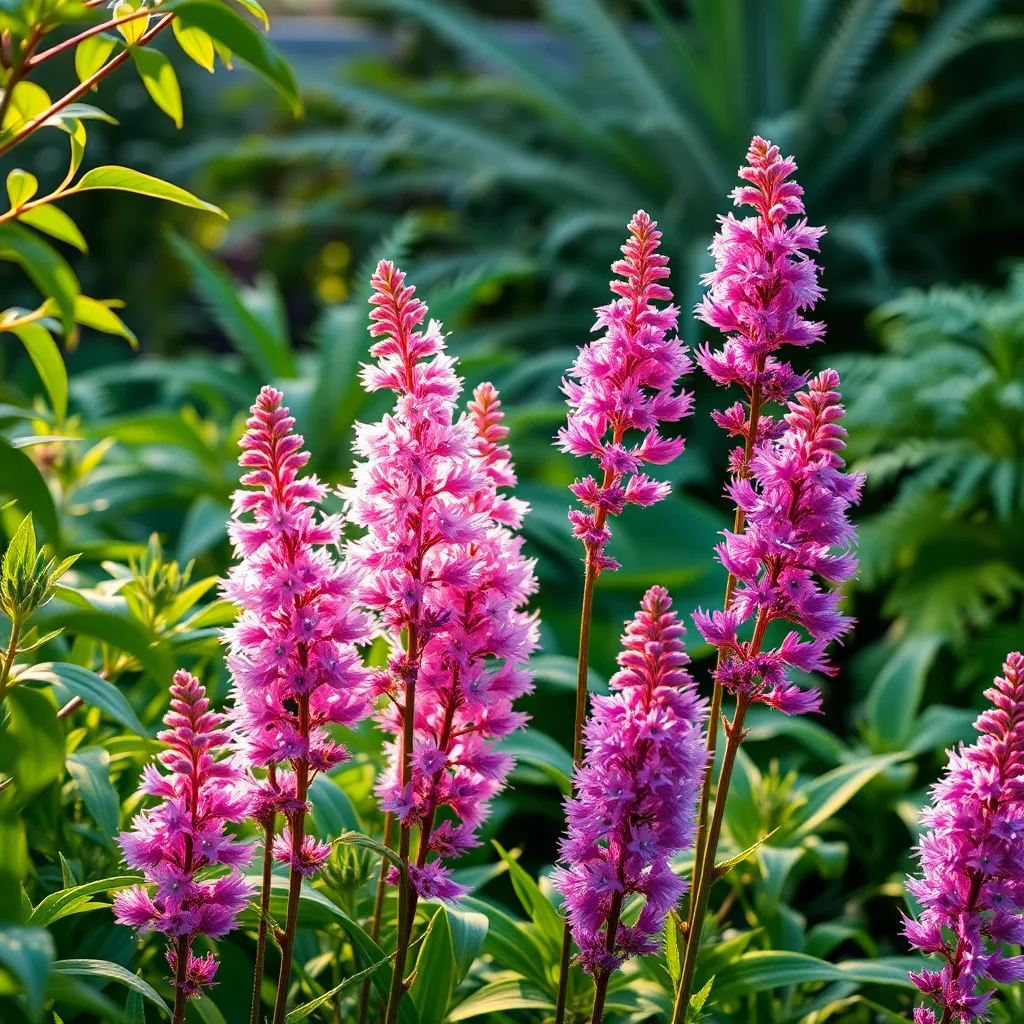
Astilbes bring a delightful splash of color to any shade garden with their feathery plumes. These perennials thrive in partial to full shade, making them perfect companions for ferns and other shade-loving plants.
To ensure healthy growth, plant astilbes in moist, well-drained soil rich in organic matter. Adding compost or aged manure to the planting area can significantly improve soil quality and support the plants’ nutrient needs.
Water astilbes consistently, especially during dry spells, as they prefer evenly moist conditions. A layer of mulch around the plants helps retain soil moisture and keeps roots cool, which is crucial for their success in hotter climates.
For a more vibrant display, consider planting different varieties of astilbes that bloom at various times, ranging from early to late summer. This staggering of bloom times ensures a continuous display of color throughout the season.
Heucheras: Vibrant Foliage Options
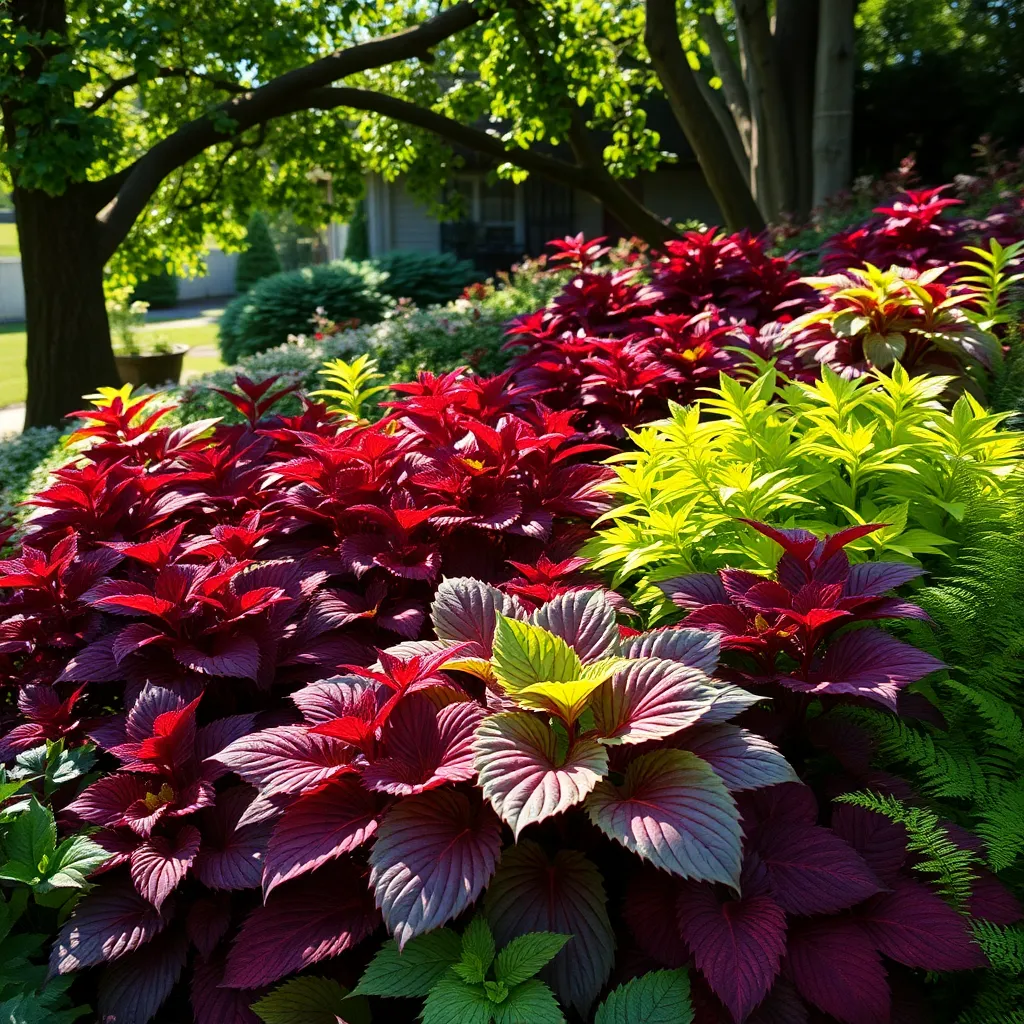
Heucheras, also known as coral bells, offer a stunning array of foliage colors, making them a fantastic choice for shade gardens. These perennial plants thrive in well-draining soil enriched with organic matter, such as compost or well-rotted manure.
For optimal growth, heucheras prefer partial to full shade, although they can tolerate some morning sun. Regular watering is crucial, especially during dry spells, but ensure the soil doesn’t become waterlogged to prevent root rot.
Beginner gardeners will appreciate that heucheras are low-maintenance, needing only an occasional trim of dead leaves to keep them looking their best. For more experienced gardeners, consider dividing your heucheras every 3-4 years to rejuvenate the plants and increase your collection.
To bring out the vibrant foliage colors, apply a balanced, slow-release fertilizer in early spring. Some varieties to consider for a splash of color in your garden include ‘Palace Purple’, ‘Caramel’, and ‘Lime Rickey’, each offering unique hues ranging from deep purples to bright greens.
Japanese Forest Grass: Graceful Texture
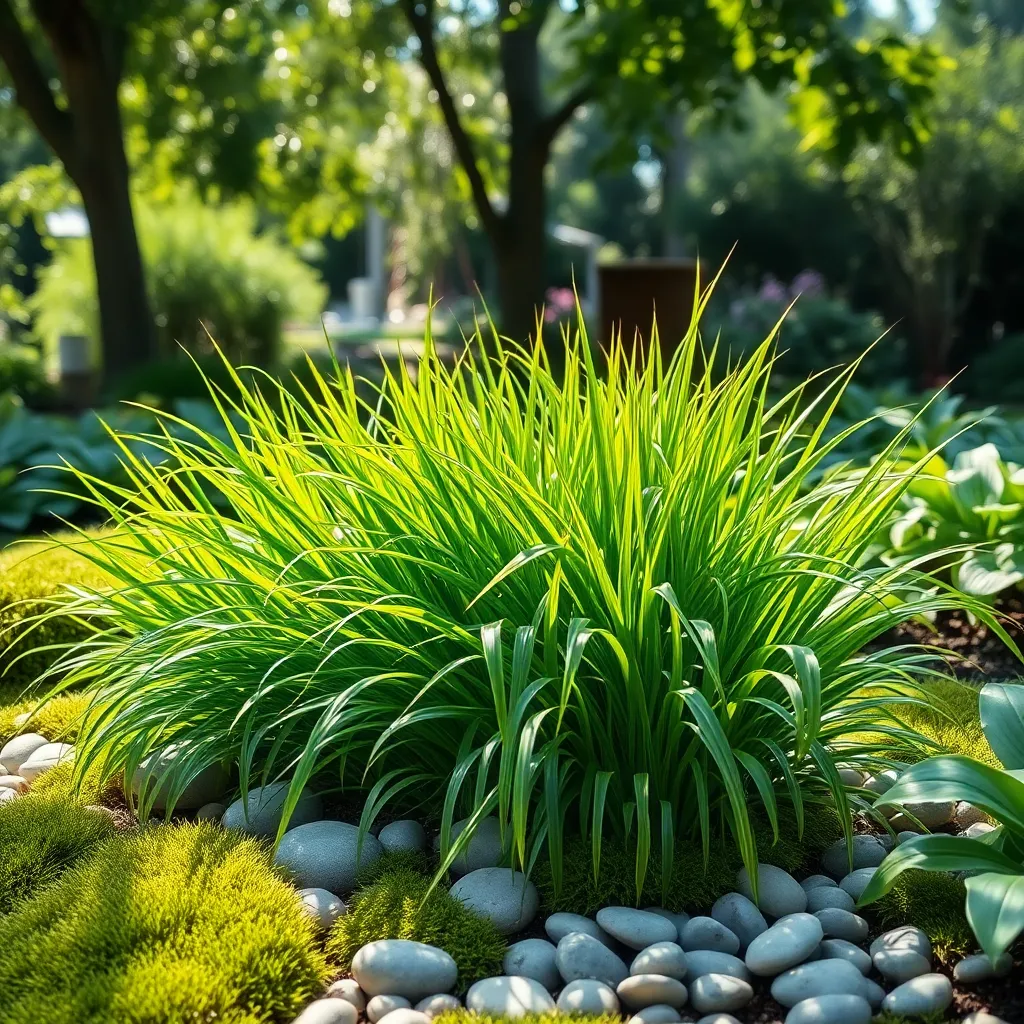
Japanese Forest Grass, or Hakonechloa macra, offers a stunning, graceful texture that thrives in shaded gardens. This plant is perfect for gardeners looking to add a touch of elegance with its arching, bamboo-like leaves that sway gently in the breeze.
To succeed with Japanese Forest Grass, plant it in well-draining soil enriched with organic matter. Ensure the soil remains consistently moist, but avoid waterlogging, as this can lead to root rot.
Position your Japanese Forest Grass in a spot with partial to full shade to protect its delicate leaves from scorching. Mulching around the base will help retain soil moisture and keep the roots cool, promoting healthy growth.
For advanced gardeners, consider dividing the clumps every few years to maintain plant vigor and prevent overcrowding. Use a sharp spade to divide the plant in early spring before new growth begins, and replant the divisions immediately for best results.
Lungworts: Early Spring Blooms
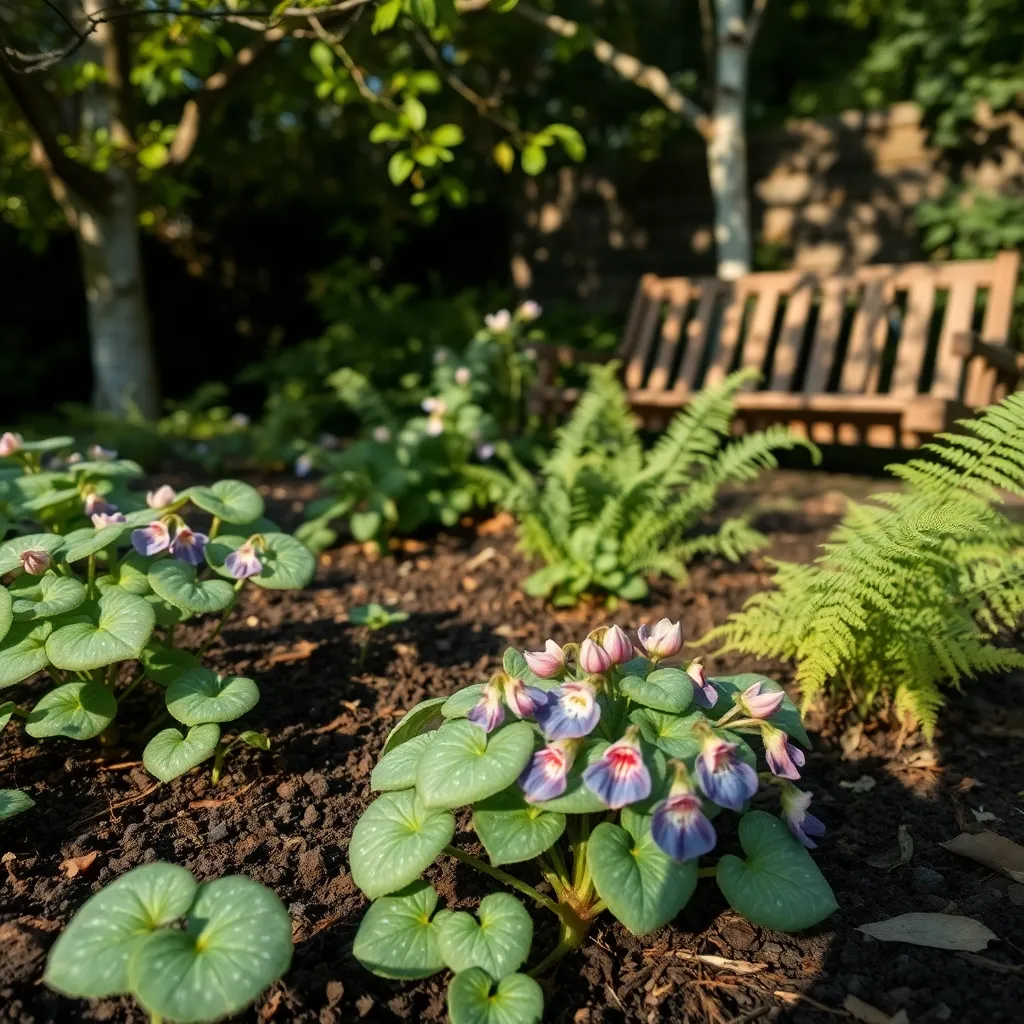
Lungworts are a delightful choice for early spring blooms, thriving in shaded garden areas with minimal fuss. These hardy perennials are known for their striking spotted foliage and clusters of small, bell-shaped flowers that can brighten up any shady spot.
When planting lungworts, choose a location with rich, well-drained soil, ideally with a high organic matter content. Adding a layer of mulch can help retain moisture and keep the roots cool, which is beneficial for their growth.
Water lungworts moderately, ensuring the soil remains moist but not waterlogged. During dry spells, increase watering frequency to prevent the plants from wilting, as they prefer consistent moisture.
To encourage healthy growth and vibrant blooms, consider dividing the clumps every three to four years in early spring. This not only rejuvenates the plants but also helps control their spread, ensuring they don’t overcrowd your garden.
Coral Bells: Diverse Leaf Patterns
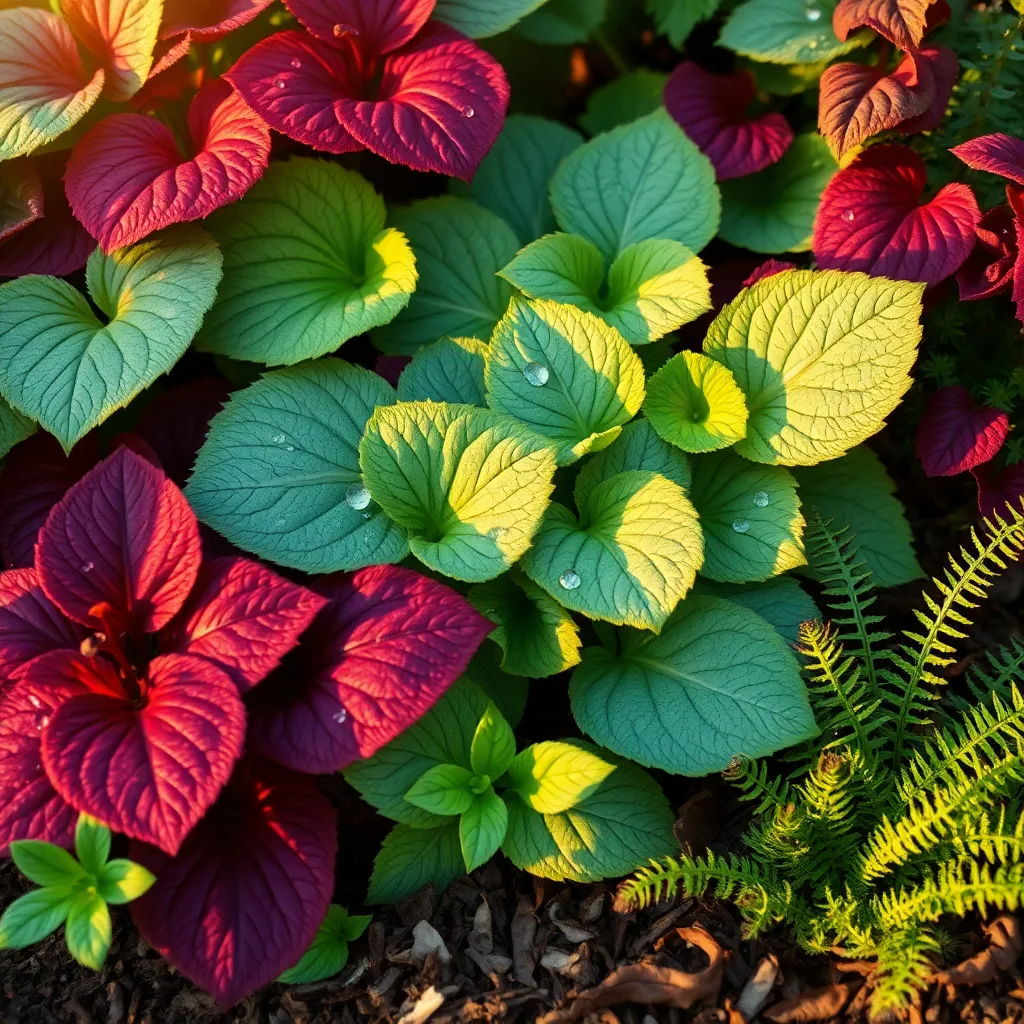
Coral Bells, known for their vibrant and diverse leaf patterns, are a delightful addition to any shade garden. These hardy perennials thrive in partial to full shade, making them perfect for areas where sunlight is limited.
To ensure your Coral Bells flourish, plant them in well-draining soil enriched with organic matter. Water them consistently, but allow the top inch of soil to dry out between waterings to prevent root rot.
For gardeners seeking a variety of colors, Coral Bells offer foliage in shades of purple, red, green, and even silver. This diversity not only adds visual interest but also allows you to experiment with different color schemes in your garden.
Advanced gardeners can propagate Coral Bells through division every few years to maintain robust growth. Simply divide the clumps in early spring or fall and replant them, ensuring each section has a healthy root system.
Bleeding Hearts: Delicate Floral Charms
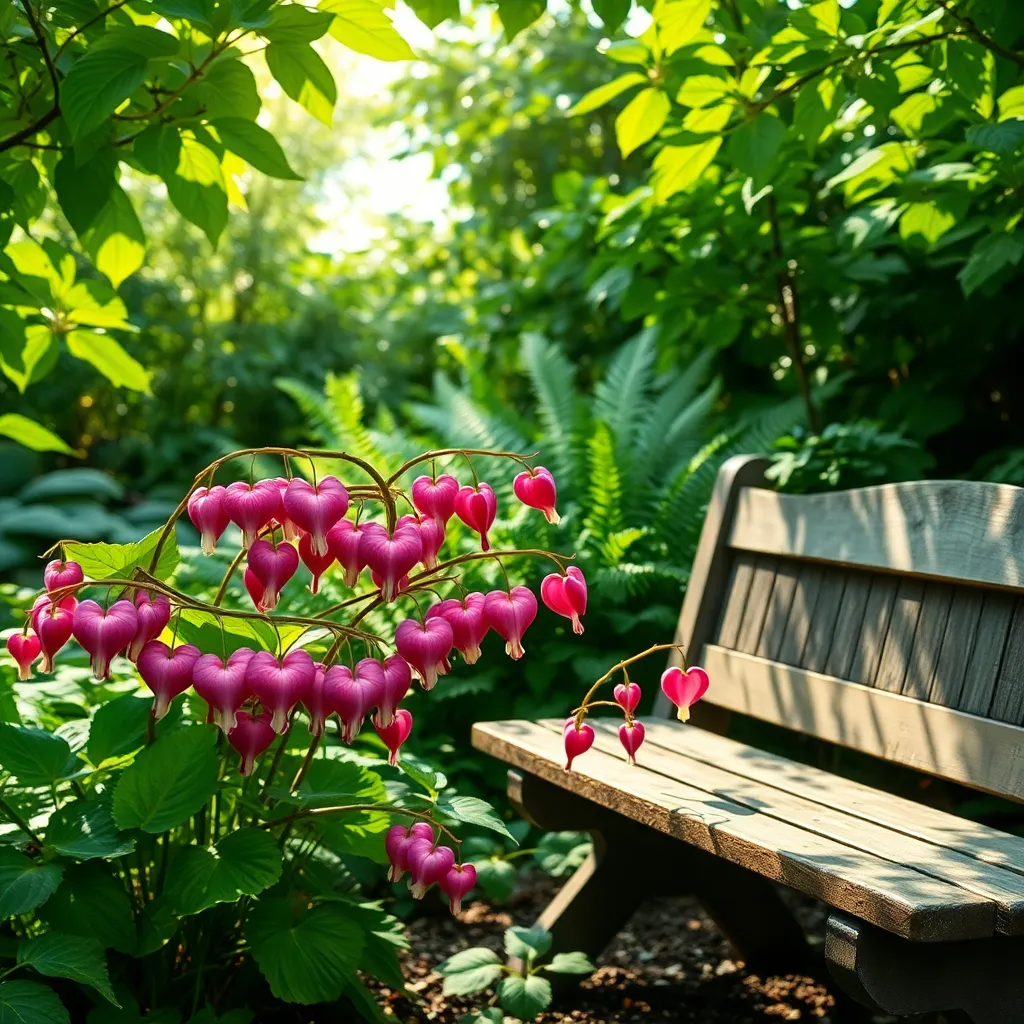
Bleeding Hearts are a stunning addition to any shade garden, known for their heart-shaped blooms that dangle gracefully from arching stems. These perennials thrive in partially to fully shaded areas, making them perfect for those tricky spots where sunlight is scarce.
When planting Bleeding Hearts, choose a location with well-draining, humus-rich soil to support their root systems. It’s important to keep the soil consistently moist but not waterlogged, so mulching can be beneficial in retaining moisture and controlling soil temperature.
Incorporating organic matter, such as compost, into the planting site can enhance soil fertility and promote healthy growth. While Bleeding Hearts are generally low maintenance, they benefit from regular watering during dry spells, especially during their active growing season in spring.
For gardeners seeking a bit more of a challenge, try propagating Bleeding Hearts by division every few years to maintain plant vigor and prevent overcrowding. This process not only rejuvenates the plant but also allows you to share their delicate charm with friends or expand your own garden.
Caring for Your Shade Garden
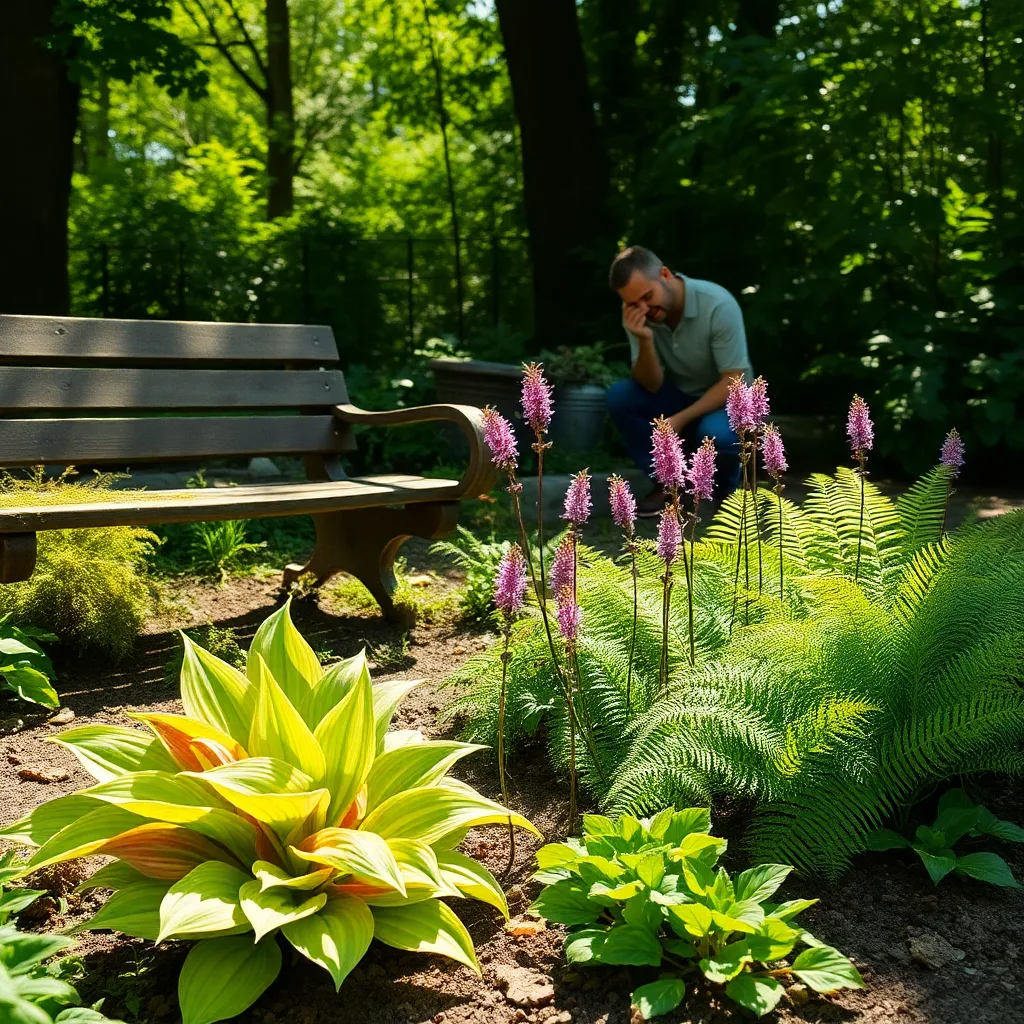
In a shade garden, selecting the right plants is just the beginning; proper care is essential for thriving foliage. Watering needs vary among shade plants, but generally, you’ll want to maintain evenly moist soil to mimic their natural woodland habitats.
Shade gardens often suffer from poor air circulation, which can lead to fungal diseases. To combat this, ensure adequate spacing between plants to allow for airflow and regularly remove any debris that could harbor pests.
Fertilizing your shade garden requires a gentle approach, as many shade-loving plants prefer less nitrogen. Opt for a balanced, slow-release fertilizer applied in early spring to support new growth without overwhelming the plants.
Mulching is particularly beneficial in shade gardens, helping to retain moisture and suppress weeds. Choose organic mulches like shredded bark or leaf mold, which will decompose over time, enriching the soil with nutrients.
Conclusion: Growing Success with These Plants
In nurturing the delicate balance of our relationships, much like tending to a shade garden, understanding the unique needs of each element is key. This article explored ten beginner-friendly shade garden plants, drawing parallels to foundational relationship concepts: the resilience of hostas mirrors the strength in communication, ferns remind us of the subtle art of patience, and the vibrant hues of astilbes reflect the importance of appreciation and gratitude. We also touched on the loyalty of bleeding hearts, the adaptability of lungworts, the gentle support symbolized by foxgloves, and the nurturing environment created by coral bells. Each plant, like each relationship, thrives under specific conditions of care and attention, teaching us about trust, compromise, and growth.
As an actionable step, choose one concept that resonates and implement it in your relationship today. Whether it’s expressing gratitude or adapting to change, small actions lead to flourishing bonds. Save or bookmark this article now to revisit these insights, ensuring they’re always at your fingertips.
Remember, with each nurturing gesture, your relationship, like a well-tended garden, blooms with success and happiness. Embrace the journey, and watch your connections thrive.

